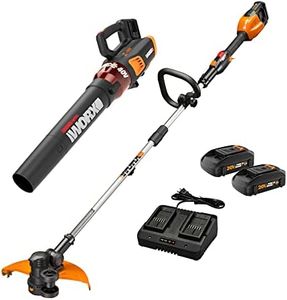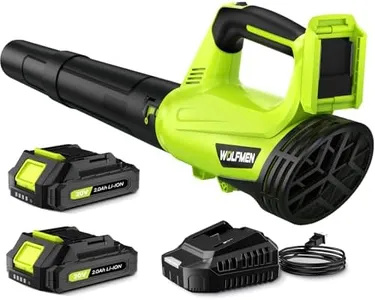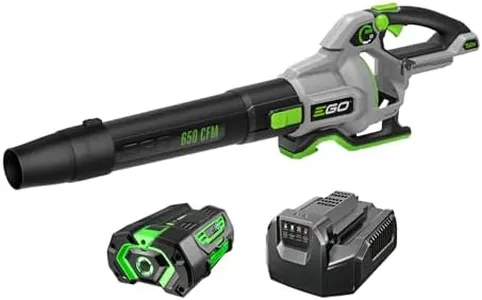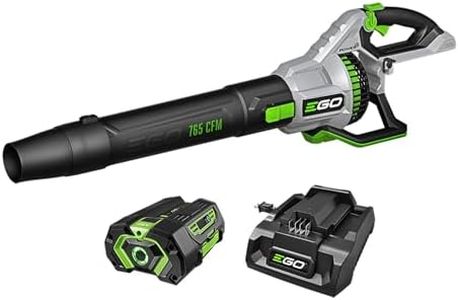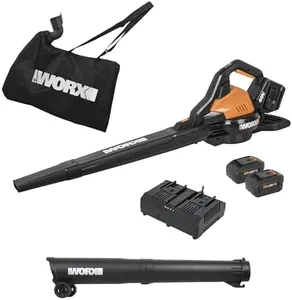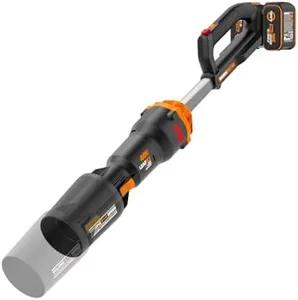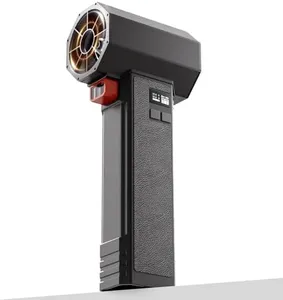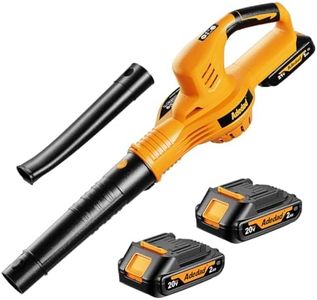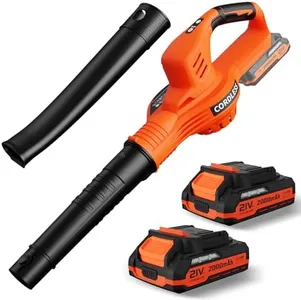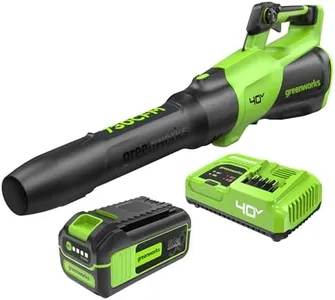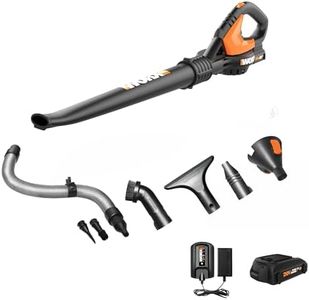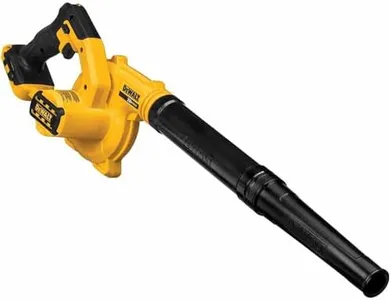10 Best Cordless Leaf Blowers 2025 in the United States
Our technology thoroughly searches through the online shopping world, reviewing hundreds of sites. We then process and analyze this information, updating in real-time to bring you the latest top-rated products. This way, you always get the best and most current options available.

Our Top Picks
Winner
Leaf Blower, Electric Cordless Leaf Blower with 2 Batteries and Charger, 2 Speed Mode, Lightweight Cordless Blower for Blowing Leaves, Patio Cleaning, Blowers for Lawn Care and Dust
Most important from
1687 reviews
The WOLFMEN Electric Cordless Leaf Blower is a versatile tool designed to simplify outdoor cleaning tasks. With its powerful motor, it delivers up to 450 CFM airflow and 150 MPH airspeed, making it effective for blowing away leaves, dust, and other lightweight debris. The inclusion of two 20V 2.0 Ah batteries allows for extended operation, with each battery offering up to 30 minutes of runtime on low speed. This dual-battery system ensures you can work for longer periods without interruption.
The adjustable speed modes provide flexibility, letting you choose the appropriate intensity based on your cleaning needs. Weighing only 3.8 pounds, it is lightweight and easy to handle, reducing user fatigue during prolonged use. The ergonomic and anti-slip design further enhances comfort and usability. The cordless feature removes the hassle of dealing with power cords, making it ideal for larger areas like courtyards, parks, and streets.
The compact and portable design, combined with easy assembly, makes it a practical choice for homeowners looking to maintain their lawns, patios, and driveways efficiently. This leaf blower is best suited for medium-sized yards and light to moderate cleaning tasks.
Most important from
1687 reviews
EGO POWER+ Leaf Blower, Cordless Electric 650 CFM, Includes 56V 5.0Ah Battery and Charger - LB6504
Most important from
8335 reviews
The EGO POWER+ Leaf Blower is a powerful cordless option that stands out with its high performance in crucial areas. It offers an impressive airflow of 650 CFM and a top air speed of 180 MPH, making it capable of handling both light and heavy-duty yard work. The included 56V 5.0Ah battery provides up to 90 minutes of runtime, which is quite generous, allowing for extended use without frequent recharging. This might appeal to users with larger areas to maintain.
Weighing in at 12.9 pounds, it's on the heavier side for some users, which might impact comfort during prolonged use. However, it does come with an ergonomic design that could offset some of this discomfort. Noise levels are relatively moderate at 64 dB, which is quieter than many comparable models, making it a less intrusive option for residential areas.
The leaf blower features a variable speed dial, providing flexibility from 225 CFM to 470 CFM, plus a turbo button for maximum power when needed. The weather-resistant construction rated at IPX4 adds durability, making it a suitable option for various climates. A notable advantage is its compatibility with all EGO 56V ARC Lithium batteries, which can be a cost-effective solution if you already own EGO tools. With a 5-year warranty on the tool and a 3-year warranty on the battery, it provides peace of mind regarding longevity.
In conclusion, while this leaf blower offers excellent power and convenience for those needing robust performance, its weight could be a consideration for users prioritizing ease of handling.
Most important from
8335 reviews
EGO POWER+ Leaf Blower, Cordless Electric 756 CFM, Includes 56V 5.0Ah Battery and Charger - LB7654
Most important from
8335 reviews
The EGO Power+ LB7654 is a reliable cordless leaf blower that offers impressive performance for homeowners and gardeners looking to manage leaves and debris efficiently. One of its standout features is the turbo button, which can unleash a powerful airflow of 765 CFM and speeds up to 200 MPH, making it suitable for tackling even the most stubborn piles of leaves. With a variable speed dial allowing control from 260 CFM to 580 CFM, users can adjust the blower to suit different tasks, whether it's gentle cleaning or heavy-duty blowing.
Another significant advantage is the battery performance; the included 5.0Ah lithium-ion battery provides up to 90 minutes of runtime, depending on usage, ensuring you can complete your yard work without frequent interruptions. The lightweight design at 9.5 pounds, along with the added shoulder strap, enhances comfort during extended use. Plus, with a noise level of just 64 dB, it operates quietly compared to many gas-powered alternatives, making it more pleasant for both the user and neighbors.
There are a few drawbacks to consider. While the battery life is decent, users with larger properties may find that they need additional batteries for extended work sessions. Additionally, the construction, while weather-resistant (IPX4-rated), may not withstand heavy rain or extreme conditions as well as some gas models. The price point can also be higher compared to basic leaf blowers, which might not be justifiable for casual users.
Most important from
8335 reviews
Buying Guide for the Best Cordless Leaf Blowers
Choosing the right cordless leaf blower is about matching the tool to your yard size, the types of debris you typically encounter, and how comfortable you want your yard work to be. Cordless models offer a lot of freedom without being tethered to a power outlet, making them convenient for quick cleanups as well as larger jobs. Understanding the key specifications will help you pick one that keeps your outdoor spaces tidy with the least hassle.FAQ
Most Popular Categories Right Now
